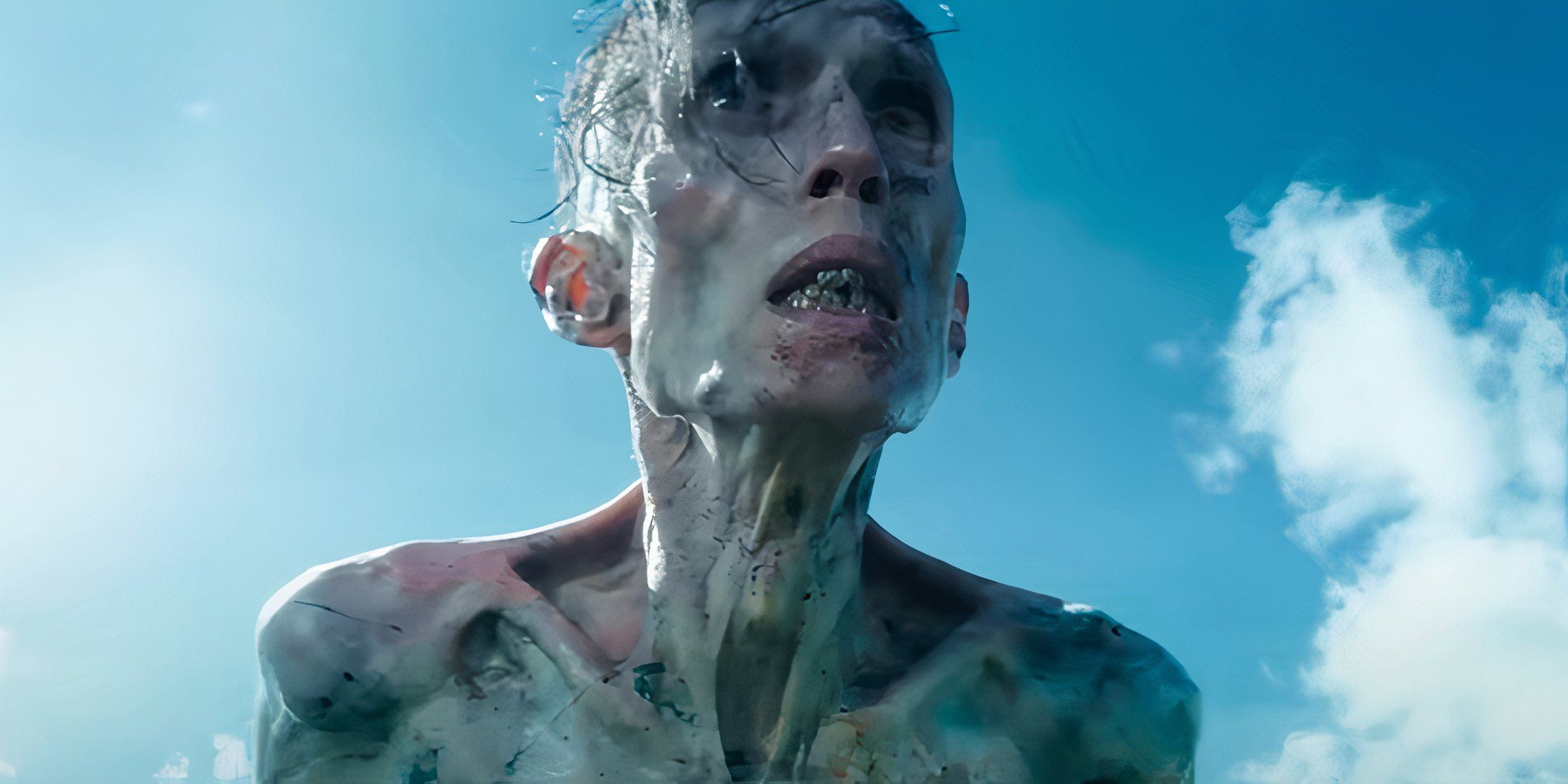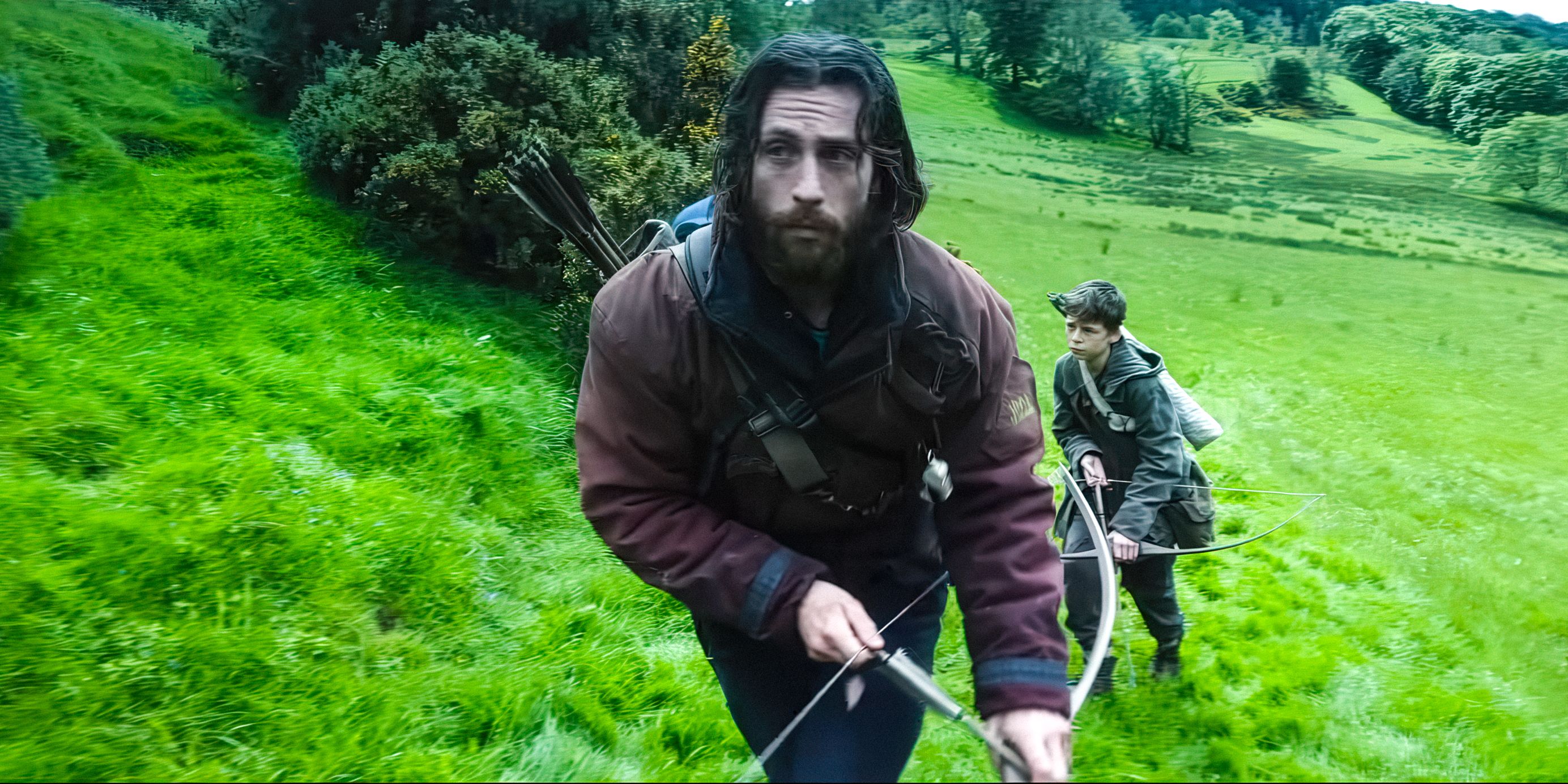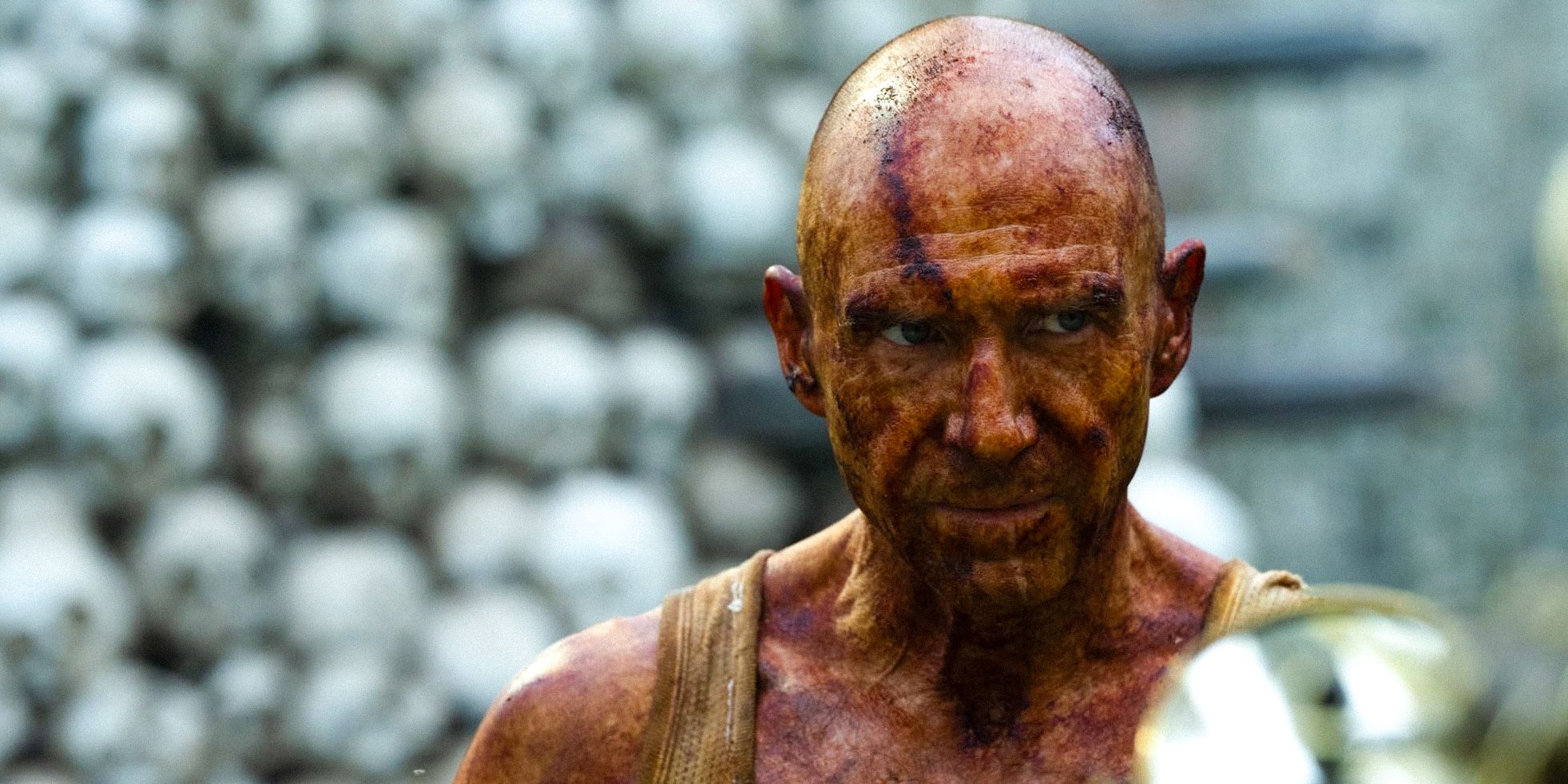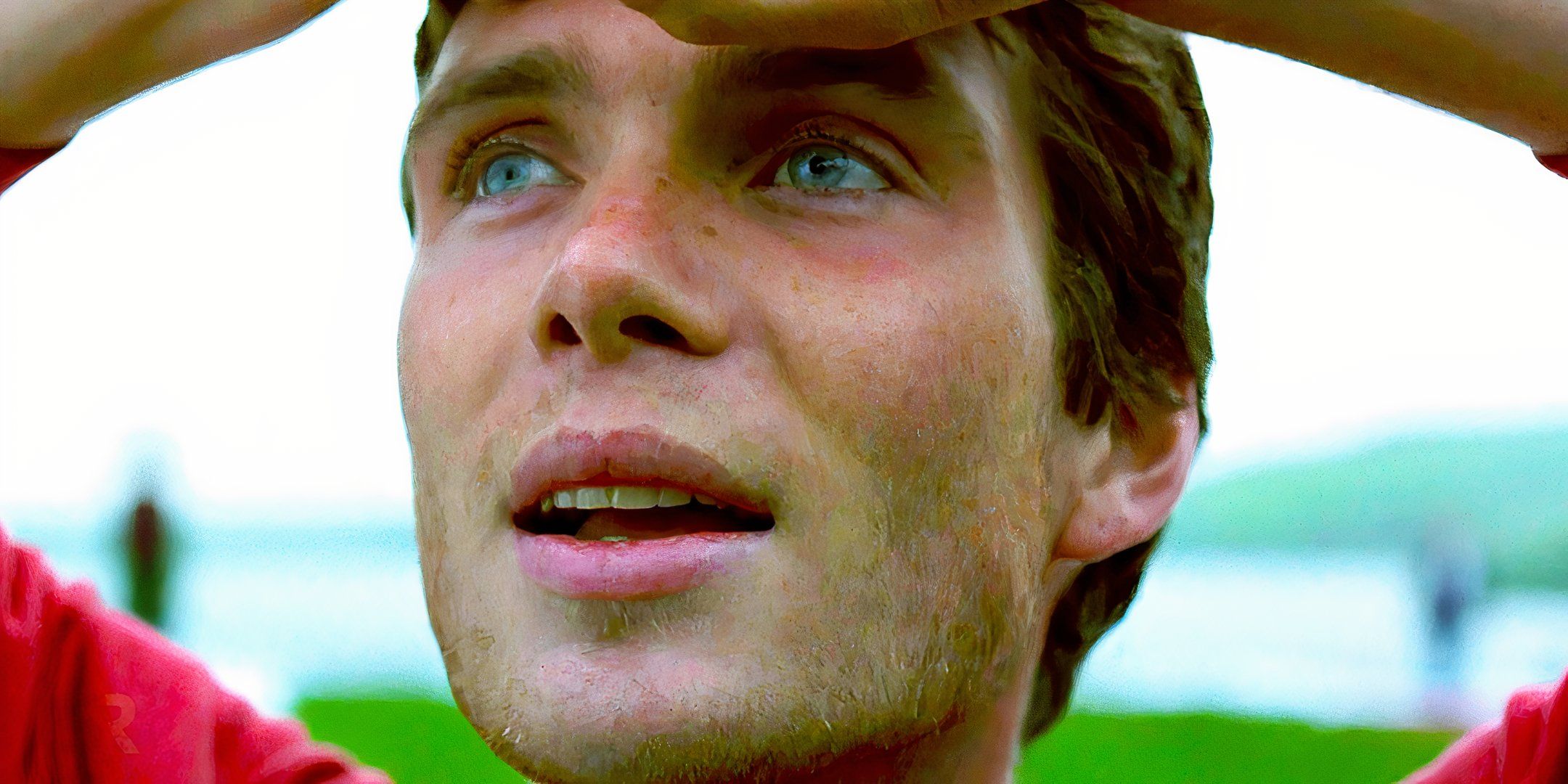Based on the Rotten Tomatoes critics and audience scores for 28 Years Later, it could end up being one of the most divisive movies of the year. Currently, the zombie apocalypse horror movie has a critics score of 89% and an audience score of 65% (via Rotten Tomatoes). Overall, reviews for 28 Years Later have been quite positive. There was undoubtedly a lot of hype heading into the film, especially since 28 Years Later broke a franchise record with its critics score. However, it’s clear that the movie hasn’t resonated with all audiences.
Not only does the movie serve as the third film in the franchise that also includes 2002’s 28 Days Later and 2007’s 28 Weeks Later, but it is also the start of a brand-new trilogy. In fact, the upcoming 28 Years Later: The Bone Temple has already been filmed and will continue the stories of characters like Spike, Jamie, Dr. Kelson, and the mysterious Jimmy. There is still a lot of hype for the sequel, but let’s take a look at why 28 Years Later has divided critics and audiences so much.
8
28 Years Later Refuses To Play It Safe
28 Years Later Is A Bold Summer Blockbuster
Since 28 Days Later is one of the most acclaimed zombie movies of all time, it honestly would have been quite easy for the long-awaited third film in the franchise to satisfy general audiences. Ever since the release of the first movie, fans have wanted characters like Cillian Murphy’s Jim and Naomie Harris’ Selena to return. Therefore, director Danny Boyle and writer Alex Garland could have easily gone the traditional legacy sequel route with 28 Years Later. Instead, they chose to tell a completely original story which featured brand-new characters.
As Entertainment Weekly’s Jordan Hoffman notes in his review of the film, instead of playing it safe, Boyle and Garland made sure that 28 Years Later “is strange, unpredictable, gloriously revolting, darkly funny, and, when you least expect it, rather touching.” By making bold creative decisions such as shooting on an iPhone and primarily following a young boy, Boyle and Garland successfully created a truly unique blockbuster. However, decisions like this are bound to be somewhat divisive.
7
28 Years Later’s Ending Is Divisive
28 Years Later’s Ending Introduces A Shocking New Character
Some of the behind-the-scenes decisions that were made during the production of 28 Years Later may not be received well by certain people. However, without a doubt, the most divisive part of the film is its ending. At the end of 28 Years Later, Spike meets Jack O’Connell’s Jimmy and his group of survivors. The members of Jimmy’s group act like they are Power Rangers and do some flips and impressive acrobatics as they kill a group of infected to protect Spike.
O’Connell’s character and his group, who are inspired by U.K. media personality and condemned Sєxual predator Jimmy Savile, will be important characters in The Bone Temple.
This action sequence feels so different from the rest of the movie, which is precisely why some viewers have argued that it ruins what would otherwise be a great film. Clearly, O’Connell’s character and his group, who are inspired by British media personality and condemned Sєxual predator Jimmy Savile, will be important characters in The Bone Temple. However, since their introduction feels so random in 28 Years Later, the ending hasn’t sat right with a lot of viewers.
6
The Infected Are Scarier Than Ever In 28 Years Later
The Infected Have Evolved In 28 Years Later
Even though the ending hasn’t been that effective for certain viewers, most critics and audiences agree that the infected are terrifying in 28 Years Later. Since it has been many years since the initial Rage Virus outbreak in the United Kingdom, the infected have evolved. In the new movie, the characters have to encounter Alphas while traveling on the mainland. Alphas are much smarter and stronger than the other infected and even give them orders.
One scene in particular, which features an Alpha chasing Spike and Jamie across the causeway which leads to their community, may end up being one of the most memorable (and scary) movie sequences of the year. However, aside from the Alphas, as CBR’s Katie Doll points out, it’s the infected’s “human appearances that are the source of some of the horror.” Throughout the movie, characters like Spike and Dr. Kelson try to avoid killing the infected since they were once humans, as well, which is an interesting commentary on the genre and arguably adds more horror to the film.
5
28 Years Later Doesn’t Include Enough Action
28 Years Later Isn’t The Zombie Movie Some Fans Were Expecting
The aforementioned causeway chase scene and some other action sequences featuring Spike and his father are great, but some viewers have argued that the second half of 28 Years Later is boring. Boyle’s most recent film is kind of split into two parts. The first part follows Spike and his father and features plenty of thrilling sequences, but the second half of the film sees the young boy traveling on the mainland with his mother, Isla. Once Spike and his mother make it to Dr. Kelson, the movie slows down quite a bit.
IndieWire’s David Ehrlich describes Spike and Isla’s encounter with Dr. Kelson as “meditative and downbeat.” While Ehrlich means this as a positive, it is clear that a lot of viewers got bored during Dr. Kelson’s speeches about the meaning of life and death. Since it is technically a summer blockbuster, some people may have expected more consistent action in 28 Years Later. Therefore, this complaint, paired with the movie’s divisive ending, may have caused many people to walk out of 28 Years Later with a sour taste in their mouth.
4
All The Characters In 28 Years Later Are Great
The Whole 28 Years Later Trilogy Will Have An Amazing Cast
Even though some people may not have liked the pacing of the film, it can’t be denied that all the characters and actors in 28 Years Later are great. While most of the characters are sidelined for large chunks of the movie, Spike, who is played by Alfie Williams, is a constant throughout. In The Hollywood Reporter’s David Rooney’s review of the film, he praises Williams and claims that he plays Spike “with a poignant balance of vulnerability and resilience.” Even though the ending is controversial, people can’t wait to see what happens to Spike next.
These actors all play very layered characters who represent different kinds of survivors in the world of the 28 Days Later franchise.
Williams’ performance as Spike may be the clear standout in 28 Years Later, but this doesn’t mean the other characters and actors aren’t amazing too. Aaron Taylor-Johnson, Jodie Comer, and Ralph Fiennes are all incredible in 28 Years Later. These actors all play very layered characters who represent different kinds of survivors in the world of the 28 Days Later franchise. Therefore, critics and audiences mostly agree that all the characters are interesting, and the actors deliver exceptional performances.
3
28 Years Later’s Emotional Third Act Doesn’t Land For Some Viewers
The Ending Of 28 Years Later Includes A Major Death
Even though practically all the performances in 28 Years Later have been praised by critics and fans, many people didn’t leave the theater feeling emotional, as was intended. As mentioned, even though all the scenes between Spike, Isla, and Dr. Kelson are surprisingly reflective and touching, the slower pace of the second half of 28 Years Later hasn’t been received well by everyone. Therefore, not only were some viewers bored during the second half of the movie, but the emotional climax of the film did not land for certain people.
As explained by Collider’s Emma Kiely in her review of the movie, Dr. Kelson “teaches Spike that life and death aren’t the pinnacles of good and evil.” Additionally, Kiely argues that it’s Fiennes’ “theatrical musings on morality that make 28 Years Later such a stand-out in a saturated subgenre.” Obviously, the emotions that 28 Years Later is meant to bring about has been incredibly effective for critics. However, audience reviews are much more critical of Dr. Kelson’s lessons, and many people simply wanted an action-packed zombie movie.
2
28 Years Later Doesn’t Include Cillian Murphy’s Return
Murphy Was Never Meant To Return In 28 Years Later
Another possible reason why 28 Years Later’s audience score is so much lower than the critics score is that Murphy doesn’t reprise his role as Jim in the film. Now, it should be noted that it was confirmed months ago that Murphy would not appear in the first movie in the trilogy. In fact, Boyle has actually stated that Murphy will return at the end of 28 Years Later: The Bone Temple. However, it’s very likely that general audiences didn’t know about this when they bought tickets for the trilogy’s first movie.
Therefore, it’s possible that some Rotten Tomatoes users gave 28 Years Later a lower score because they were expecting Murphy to return in the film. Obviously, this isn’t the fault of Boyle, Garland, or the rest of the film’s creative team. At the end of the day, 28 Years Later was always intended to be a new, somewhat standalone story. However, it still needs to be noted that this could be a reason why the film has been so divisive on Rotten Tomatoes.
1
28 Years Later Doesn’t Answer Enough Questions About The Rest Of The World
Will The 28 Years Later Trilogy Feature Characters In Other Countries?
Since it has been, well, 28 years since the Rage Virus wiped out most of the U.K., a lot of fans wanted to learn more about the state of the rest of the world in 28 Years Later. The new film does include some worldbuilding. For instance, it is established that patrol boats from different countries constantly sail around the U.K. to make sure nobody escapes the island. Additionally, the Swedish soldier Spike and Isla meet about halfway through the film makes it clear that the rest of the world has developed like nothing is wrong.
However, several fans are annoyed that the franchise’s newest movie quickly brushes over the ending of 28 Weeks Later, which saw a group of infected storm Paris. Therefore, it’s obvious that many fans expected the Rage Virus to have more worldwide consequences, rather than just be contained to the U.K. The infected only existing in the U.K. is another reason why the 28 Days Later franchise is so unique, but not all fans like this idea. Therefore, some people wish 28 Years Later wasn’t set entirely in the U.K., which could explain some negative reviews.
Sources: Entertainment Weekly, CBR, IndieWire, The Hollywood Reporter, Collider










